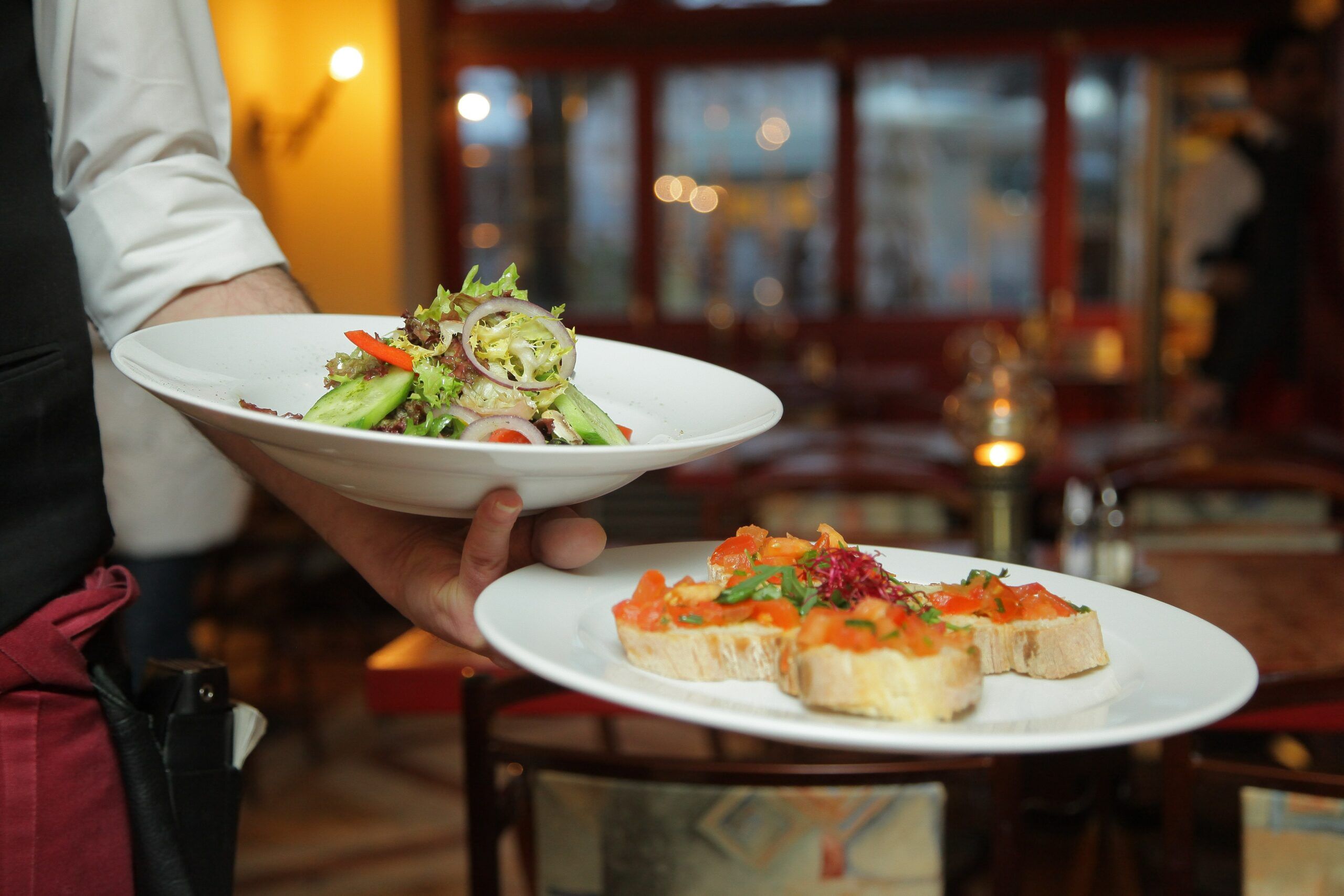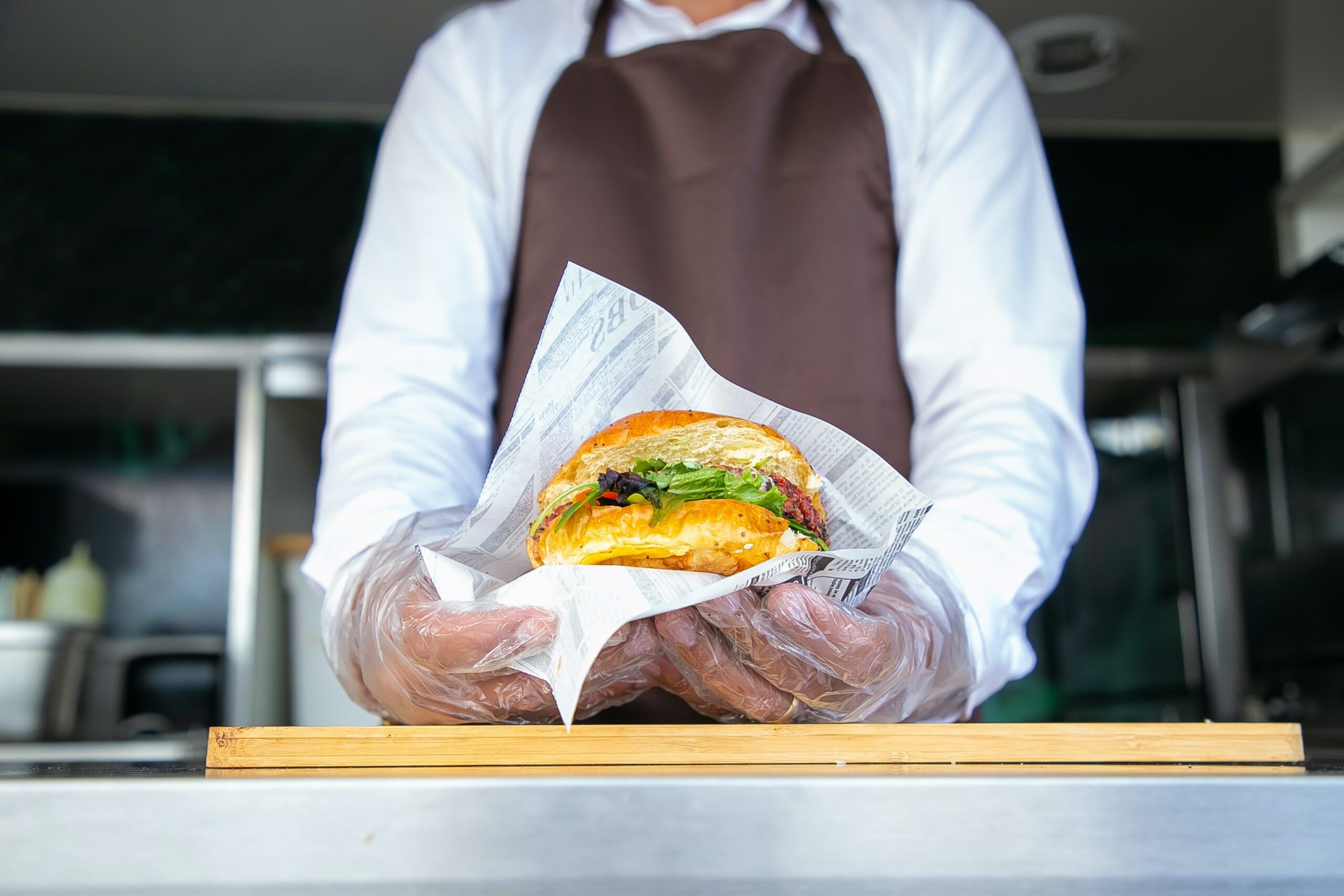- What is Restaurant Branding?
- What Factors You Need to Check to Maintain Brand Consistency for Your Franchise
When hearing the word franchises, what kind of brand comes to mind?
McDonald’s, Subway, 7-11, and Dunkin’ Donuts are some of the first that comes to most people’s minds. Franchises have strict guidelines to follow to maintain their brand image and keep customers coming back.
In 2020, there were around 753,770 franchise establishments in the US. And if you’re looking to get into the franchise business, or if you already have a franchise and want to make sure you’re doing everything right when it comes to branding – this guide is for you.
Restaurant branding for franchises can be tricky. You want to be consistent with your branding, but you also need to take into account the different locations and how they might need to adapt your branding for their specific market.
This article will give tips on maintaining restaurant brand consistency while providing each location the flexibility it needs.
What is Restaurant Branding?
Before we get into how to brand a restaurant franchise, let’s first define what branding is.
In short, your brand is your promise to your customers. It’s what they can expect from your restaurant and what sets you apart from the competition.
Your restaurant brand is much more than just your logo or your name. It’s the overall experience that your customers have with your restaurant, from the food to the service to the décor.
Restaurant owners should consider creating a strong brand that will help attract and retain customers and make their restaurant more profitable.
What Factors You Need to Check to Maintain Brand Consistency for Your Franchise
Before jumping into franchising or if you want to reassess your franchise brand image, it’s crucial to define the following for your restaurant business:
- Your mission statement, that’s the WHY behind your restaurant.
- Your target market, who you want to attract to your restaurant.
- Your USP (unique selling proposition), is what makes your restaurant different from others.
- Your brand personality, and how you want your customers to perceive your restaurant.
- Your values, are the guiding principles behind everything you do.
With that in place, you can start building your brand. These 5 points will be the foundation for your restaurant’s branding strategy.
Best Restaurant Branding Ideas for Your Franchise
Now that we’ve defined branding, let’s take a look at some best practices for restaurant branding for franchises.
1. Keep your branding consistent across all locations.
This may seem like a no-brainer, but it’s important to remember that customers will associate your brand with all of your locations – not just the one they visit most often.
That means that a big discrepancy in the branding between two locations could reflect poorly on your overall brand.
Some things to keep consistent across all of your locations include:
- Your restaurant logo and brand colors.
- Your brand voice ie. the way you communicate with your customers.
- The quality of your food and service
- Your menu.
- Your décor.
- Your service standards.
Of course, there will always be some slight variations between locations – that’s to be expected. But in general, you want to make sure that the overall experience is similar no matter which location a customer visits.
Consistency is key for a successful franchise. And with Orders.co, you can increase your franchise profits by tracking location performance reports, managing your menu, and analyzing your sales data. In other words, it helps you to run your franchise business more efficiently and effectively.
2. Let each location have some flexibility with its branding.
While it’s important to keep your restaurant branding and brand identity consistent across all locations, you also need to give each location some flexibility to adapt its branding to its specific market.
For example, a franchise in a more rural area is going to have a different target market than a franchise in a major city. And that means that their branding needs to reflect that.
Some things that each location can customize include:
- Their logo (within the guidelines set by the franchise)
- Their menu (again, within the guidelines set by the franchise)
- Their décor and ambiance.
- Their marketing and advertising campaigns.
Giving each location some flexibility with their branding and marketing efforts will allow them to better appeal to their target market, which will in turn help boost sales.
Your Inbox, Your Rules!
Tailor your newsletter with the topics you're most interested in.
3. Make sure your franchisees are on board with your branding.
If you want to maintain a consistent brand and secure brand loyalty across all your franchise locations, you need to ensure that your franchisees are on board with your branding strategy.
That means clearly communicating your brand guidelines and expectations to them, and making sure that they understand the importance of maintaining a consistent brand.
It also means giving them the resources and support they need to implement your restaurant’s brand strategy effectively.
It’s crucial to note that promotional and marketing strategies can be created and run solely on the corporate level or by participating with locations.
In case of participation, franchises will be under the tagline “participant locations only” or “participating locations”.
This is a very effective way to increase brand awareness and loyalty and it’s highly encouraged!
When customers see that their favorite restaurant is a participating location, they are more likely to visit that location and take advantage of the promotion.
This also creates a sense of community among franchisees. By working together to promote the brand, franchisees are more likely to form bonds and build relationships with one another – which can only benefit the franchise as a whole.
4.Use Social Media Carefully
While social media can help you reach a wider audience and promote your brand more effectively, you need to be careful with how you use it.
Corporate-level social media takeover can hurt more than it helps when it comes to franchise branding.
That’s because each franchise location is its own unique business with its own target market. And when the corporate account takes over, it can make it difficult for franchisees to connect with their target market.
It’s important to strike a balance between corporate-level social media posts and franchisee-level social media posts.
Too much of either can be detrimental to your franchise branding efforts.
5. Focus on the Customer Experience.
At the end of the day, your customers are the ones who will ultimately decide how they feel about your brand.
That’s why focusing on providing a great customer experience is important.
Make sure that your customers have a positive experience every time they interact with your franchise, and they’ll be more likely to remember your brand positively.
That’s why it’s best to track the performance of your franchises regularly to ensure that they’re providing the best possible experience for your customers.
Being able to review location performance and make adjustments is key to both corporate and individual store success.
Using tools to review menu performance, promotion sales, and more, is of great value to everyone in the company. And having your stores share this important data with you helps you make more informed decisions about your franchise branding strategy.
By following these best practices, you can create a strong restaurant branding strategy and help ensure consistency and effectiveness.
6. Keep Websites for Online Delivery Consistent
To ensure customers have a consistent and satisfying experience with your franchise brand, it’s crucial to keep your websites for online delivery consistent.
That means using the same logo, color scheme, and overall design across all of your websites. It also means using the same branding language and tone.
By keeping your websites consistent, you can help create a cohesive brand experience for your customers.
It’s also best if restaurant branding practices and policies are planned and developed before expanding to a new location. Granted, you can always review your performance and make the necessary changes while implementing these branding tips.
And if you’re eager to grow your brand and reach new geographic areas, ensure to follow these 11 steps for expanding your franchise, to get the most out of your investment.
Effective Restaurant Branding for Franchises Boosts Brand Image and Recognition
Restaurant branding is a critical component of success for any franchise. It can be the difference between customers coming in or going elsewhere.
Maintaining a consistent brand image across all locations is essential, but it can be difficult to do with so many different people involved.
There are a few key things to remember when creating your restaurant branding strategy.
- First, make sure that everyone from the top down understands and embraces the brand identity.
- Second, use standard templates for marketing materials and signage so that there is a sense of cohesion among all locations.
- And finally, create clear guidelines for how employees should represent the brand both online and offline.
Successful restaurant branding starts with a restaurant business embracing its unique selling point to expand its business and boost sales.
By following these simple tips, you can ensure that your restaurant branding is on point no matter where your customers find you!



